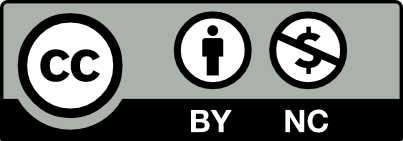Efficacy and safety of intense pulsed light in the treatment of mild-to-moderate acne vulgaris
Abstract
Acne vulgaris is a very common chronic inflammatory disease of pilosebaceous units. It can be associated with considerable loss of self-esteem and psychological morbidity when left untreated. With the emergence of lasers and intense pulsed light, long-term reduction of acne lesions is now possible. The success of these optical devices depends on the selected parameters and biologic variables of patient. The objective of this study is to determine the efficacy and safety of intense pulsed light (IPL) in the treatment of mild-to-moderate acne vulgaris. This interventional study was conducted for a period of one year after approval of synopsis. A total of 75 patients of mild-to-moderate acne vulgaris were included through non-probability, convenience sampling. Patients were subjected to intense pulsed light (IPL) therapy once a week for four weeks. Digital photography was done at the baseline and at the sixth week. Follow-up was done after two weeks of completion of four sessions. Repeated measurement ANOVA was used for significance of IPL at six weeks of follow-up. The p value < 0.05 was taken as significant. IPL was effective in 52% of the patients. Out of all cases, 6 (8%) showed excellent results. 33 (44%) showed >50% reduction with therapy. Percentage reduction was observed as 49 ± 20% at final follow-up. Papules count was reduced from 11.95 ± 2.89 to 6.69 ± 2.96, pustules count was reduced from 2.55 ± 1.54 to 0.79 ± 1.02 from baseline to final follow-up visit. 16 subjects showed mild erythema that resolved within 24 h. None of the patients showed any severe side effects at final follow-up visit. We conclude from the results of this study that IPL is safe and efficacious in more than half of the patients in the treatment of mild and moderate acne vulgaris. A long-term follow-up is required to determine long-term safety on skin following such procedures.
References
Simpson NB, Cunliffe WJ. Disorders of the sebaceous glands. 8th ed. In: Burns T, Breathnach S, Cox N, Griffiths C (editors). Rook’s textbook of dermatology. London: Wiley-Blackwell; 2013. p. 17–38.
Asad F, Qadir A, Nadeem M. Quality of life in patients with acne vulgaris. J Coll Physicians Surg Pak 2002; 12(11): 654–656.
Asad F, Qadir A, Ahmad L. Anxiety and depression in patients with acne vulgaris. J Pak Assoc Derma 2002; 12(2): 69–72.
Zaenglein AL, Graber EM, Thiboutot DM, Strauss JS. Acne vulgaris and acneiform eruption. 7th ed. In: Gold-smith LA, Katz SI, Gilchrest BA, Paller AS, Leffell DJ, et al. (editors). Fitzpatrick’s dermatology in general medicine. USA: McGraw Hill Companies; 2008. p. 696–700.
Omi T, Bjerring P, Sato S, Kawana S, Hankins R, et al. 420 nm intense continuous light therapy for acne. J Cos-met Laser Ther 2004; 6(3): 156–162. doi: 10.1080/147 64170410023785.
Babilas P, Shreml S, Szeimies RM, Landthaler M. Intense pulsed light (IPL): A review. Lasers Surg Med 2010; 42(2): 93–104. doi: 10.1002/lsm.20877.
Chang SE, Ahn SJ, Rhee DY, Choi JH, Moon KC, et al. Treatment of facial acne papules and pustules in Korean patients using an intense pulsed light device equipped with a 530- to 750-nm filter. Dermatol Surg 2007; 33(6): 676–679. doi: 10.1111/j.1524-4725.2007.33142.x.
Kawana S, Tachihara R, Kato T, Omi T. Effect of smooth pulsed light at 400 to 700 and 870 to 1,200 nm for acne vulgaris in Asian skin. Dermatol Surg 2010; 36(1): 52–57. doi:10.1111/j.1524-4725.2009.01380.x.
Yeung CK, Shek SY, Bjerring P, Kono T, Chan HH. A comparative study of intense pulsed light alone and its combination with photodynamic therapy for the treatment of facial acne in Asian skin. Lasers Surg Med 2007; 39(1): 1–6. doi: 10.1002/lsm.20469.
Isobel Washington. LEAFtv [Internet]. USA: Leaf Group Ltd.; 2000. Available from: http:// www.ehow.com/about5 125500 ipl-treatment-acne.html.
Hayashi N, Akamatsu H, Kawashima M. Acne study group. Establishment of grading criteria for acne severity. J Dermatol 2008; 35(5): 255–260. doi: 10.1111/j.13 46-8138.2007.00403.x-i1.
Elman M, Lask G. The role of pulsed light and heat energy (LHE™) in acne clearance. J Cosmet Laser Ther 2004; 6(2): 91–95. doi: 10.1080/14764170410035584.
Burkhart CG, Burkhart CN, Lehmann PF. Acne: A review of immunologic and microbiologic factors. Postgrad Med J 1999; 75(885): 328–331. doi: 10.1136/pgmj.75.884.328.
Kumaresan M, Srinivas CR. Efficacy of IPL in treatment of acne vulgaris: Comparison of single- and burst-pulse mode in IPL. Indian J Dermatol 2010; 55(4): 370–372. doi: 10.4103/0019-5154.74550.
Dierickx CC. Treatment of acne vulgaris with a variable-filtration IPL system. Lasers Surg Med 2004; 34(S16): 66. doi: 10.1002/lsm.20055
Rojanamatin J, Choawawanich P. Treatment of inflammatory facial acne vulgaris with intense pulsed light and short contact of Topical 5-aminolevulinic acid: A pilot study. Dermatol Surg 2006; 32(8): 991–997. doi: 10.1111/j.1524-4725.2006.32221.x.
Mohanan S, Parveen B, Annie Malathy P, Gomathi N. Use of intense pulse light for acne vulgaris in Indian skin—A case series. Int J Dermatol 2012; 51(4): 473–476. doi: 10.1111/j.1365-4632.2011.05295.x.
Copyright (c) 2017 Khan WZ, et al.

This work is licensed under a Creative Commons Attribution-NonCommercial 4.0 International License.
Author(s) shall retain the copyright of their work and grant the Journal/Publisher rights for the first publication with the work concurrently licensed under the Creative Commons Attribution-Noncommercial 4.0 International License
Under this license, author(s) will allow third parties to download, reuse, reprint, modify, distribute and/or copy the content under the condition that the authors are given credit and that the work is not used for commercial purposes. No permission is required from the authors or the publisher.
This broad license intends to facilitate free access, as well as the unrestricted use of original works of all types. This ensures that the published work is freely and openly available in perpetuity.



